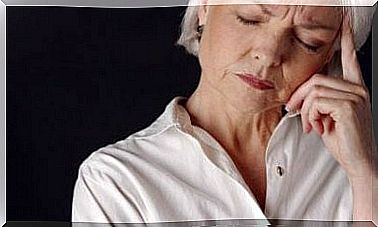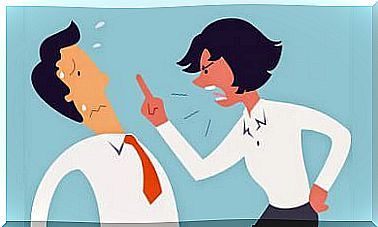Anxiety And Sedentary Lifestyle: How Are They Related?

Anxiety and sedentary lifestyle are closely related. It has been proven that a lifestyle defined by low physical activity increases the possibility that we end up suffering changes in mood. Likewise, it has also been seen that anxiety disorders themselves also lead to less motivation for movement and exercise …
We are therefore facing a striking and also dangerous vicious circle. We cannot ignore a fact that the World Health Organization (WHO) warns us about, inactivity is a public health problem that affects more than half of the population. In addition, this reality not only defines a good part of adults. Children and adolescents also show a high sedentary lifestyle.
The effects of this evidence are, as we well know, clearly harmful. Arteriosclerosis, obesity, type II diabetes, hypertension … Most of us know the risks to physical health. However, it is important to bear in mind that lack of activity, not moving with life, causes the mood to rust, darken and lead to pathological states.

Anxiety and sedentary lifestyle: a double bind relationship
Discouragement, negative thoughts, irrational ideas, insomnia, exhaustion … Anxiety is a mood disorder that shows a wide and complex symptomatology. Also, there is an undeniable fact: it is not easy to define what the triggers of this psychological condition are. Often, they are multiple: lifestyle, genetics, environmental factors, lack of coping strategies …
Now, we cannot rule out one more: sedentary lifestyle. Research works such as the one carried out at the University of Deakin (Australia) show how continued physical inactivity is related to a higher risk of suffering from both anxiety and depression. And this is manifested both in adults and in the younger population.
However, the problem is even more complex because, in reality, anxiety and sedentary lifestyle are in a double-bind relationship. That is, the fact of not moving throughout the day aggravates the mood but also anxiety disorders also lead us to less physical activity. We are therefore facing a public health reality that we must bear in mind more.
A sedentary lifestyle and its effect on mental health, a fierce enemy
We live in a society that increasingly demands less from the body and more from the mind. It is very likely that when pronouncing the word “sedentary lifestyle” we imagine a person sunk on the sofa, watching TV and eating potato chips. Is not always that way. We can have an executive, a scientist or a company administrator leading a clearly sedentary life, but being highly productive at the same time.
Our children and adolescents also show this fact. The time they spend in front of the screens, video games or on social networks like Tik Tok leads them to that chronic lack of activity of which we are not always aware. This lifestyle defined by modern immobility progressively erodes mental health.
Anxiety, a mental and physical immobilizer
Anxiety and sedentary lifestyle make up a double link: both feed off each other. And the fact that it is so is problematic. We often recommend that people with depression or anxiety disorders play sports and lead a more active life. However, they do not always succeed in meeting it.
In a study from the Anglia Ruskin University (United Kingdom) they talk about this relationship: people with anxiety are up to twice as likely to have a more sedentary life. It is not easy to prescribe someone to start to leave the house to run or practice tennis, dance or Zumba classes to reduce the effect of anxiety.
The causes that explain it are the following reasons:
- Anxiety leads to increased physical exhaustion, a feeling of suffocation, and tachycardia. Any effort is lived in an oversized way.
- On the other hand, and beyond the physical symptoms, there is discouragement and lack of commitment. They can start doing sports two or three days in a row and finally quit.
- These mood disorders are associated with low motivation and constant frustration. In addition to not feeling the desire to move, they do not see it useful either.

Anxiety and sedentary lifestyle, how to handle them?
Anxiety and sedentary lifestyle go hand in hand because they are a reflection of our current lifestyle. We have stopped moving with our reality because reality has become static and attached to new technologies. We do not demand efforts from the body because we have enough to go through the intricate (and exhausting) mental labyrinths.
Worry exhausts and when the mind reaches the limit there is no energy left for the body. What can we do in these cases? The strategy is twofold. It is necessary to take care of the body and motivate the mind so that anxiety and sedentary lifestyle lose strength, are diluted and optimize our quality of life. These would be some strategies:
Take care of the mind
- Practice good mental hygiene : rationalize your worries, control negative thoughts and irrational ideas, do not feed your problems with anguish and seek solutions.
- Manage your emotions.
- Give yourself moments of calm and silence, allow your mind to relax.
- Set goals that excite you every day.
- Surround yourself with people who bring you peace.
- Look for new hobbies and passions with which to motivate your brain.
Motivate the body
- Create a daily routine in which to start by dedicating 30 minutes to physical exercise.
- Start a practice at home like yoga, Pilates or Zumba.
- Find a friend with whom to start doing some kind of sport together a day or a week.
- Start planning trips to the countryside or the beach where you can do some physical activity. It is necessary that the concept of rest time also includes moving with life.
To conclude, do not hesitate to consult with professionals in case we are unable to make changes. The effect of sedentary lifestyle and chronic anxiety are highly nocturnal. Let’s keep it in mind.









